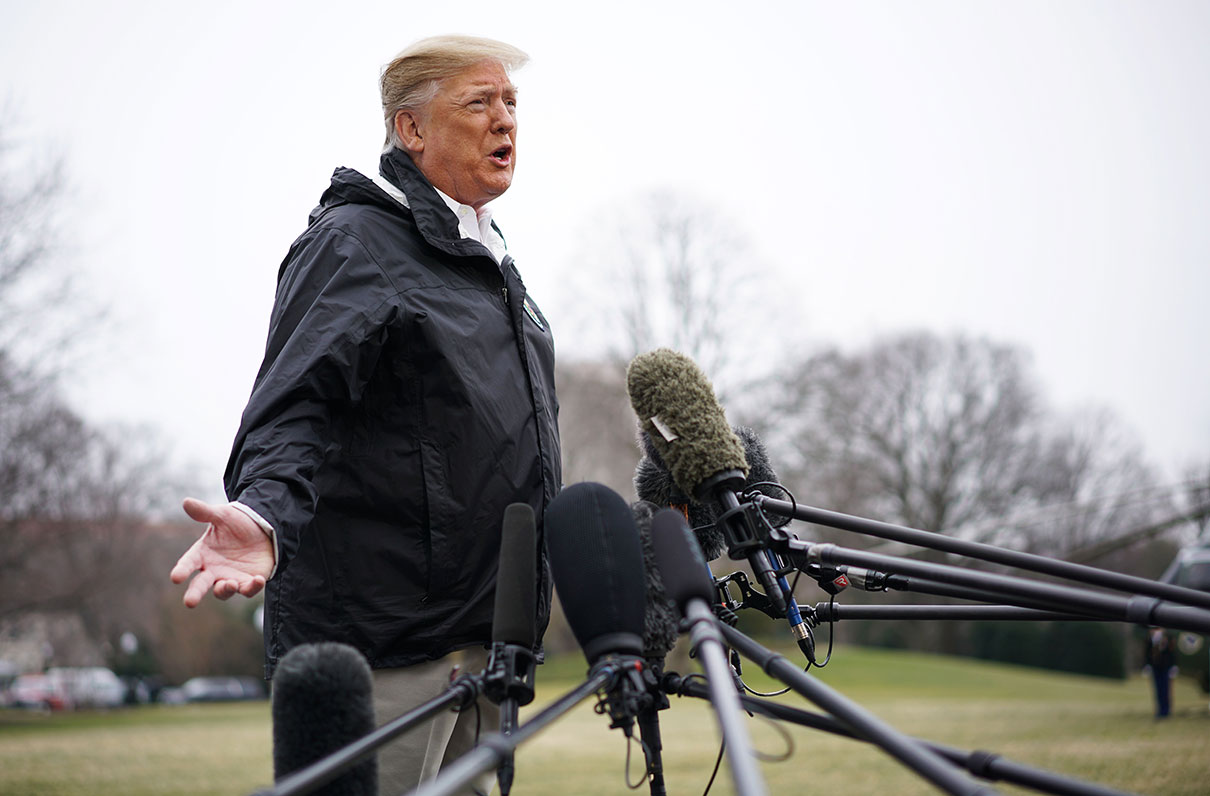President Trump released his proposed budget for fiscal year 2020 on Monday, requesting $4.746 trillion resulting in a $1.1 trillion deficit for FY 2020 - with a plan of tapering the deficit spending down to $202 billion by FY 2029. The proposal increases defense spending at the expense of non-defense programs; and as one might expect, the plan was met with both opposition and optimism.
House Budget Committee Chairman John Yarmuth (D-Ky.) said, of the budget, “… it is not responsible or even usable.” Senator Mike Enzi (R-Wyo.), Chairman of the Senate Budget Committee, said “I look forward to working with my colleagues and the President to curb federal overspending…” These opposing sentiments, from the two most senior leaders in the congressional budgeting process foreshadow the challenges to come.
[RELATED: 2020 Budget Proposal Has Largest Troop Pay Raise in a Decade]
While MOAA remains nonpartisan, we also remain aware of the challenges woven into this complicated process now underway. First in the queue are the hearings and reviews by the House and Senate Budget Committees. We can expect, within these committees, differences along party lines - but also lines defined by region and industry (agriculture, defense, education, energy, etc.). The budget committees' task is to propose budget resolutions.
At the same time this process kicks off with the budget committees, the House and Senate Armed Services Committees begin drafting the National Defense Authorization Act. The budget resolutions establish the budget authority and outlays for these committees and their subcommittees.
Next are the House and Senate Appropriations Committees, which use the proposed budget resolutions to determine the actual funding for the government. This process of appropriations has become more visible since the recent government shutdown. And on that note, this entire process, to include passage of law, must be complete by the end of this coming September, or we head into another series of continuing resolutions … or another government shutdown.
Where best for MOAA to influence outcomes favoring our legislative priorities? At the headquarters, we pay attention to the hearings and positions espoused by the VA, DoD and the Services; as well as the departments overseeing the U.S. Coast Guard, U.S. Public Health Service, and the National Oceanic and Atmospheric Administration. We will meet with leaders from these departments to ensure we understand their intent and potential actions. We also meet with members of Congress and their staffs relative to their committee assignments or legislation they introduced or co-sponsored.
For our members, we ask you to follow through on our calls-to-action to engage your members of Congress. Equally important is to develop a relationship with your elected officials and learn their expanded roles via their committees and caucuses - some of them will be instrumental in this budget and appropriations process.
Ideally, the culmination of the budget and appropriations, as it relates to DoD, would align with the National Defense Authorization Act, which last year was signed into law in August, with appropriations signed into law September 2018. This explains why the DoD was not impacted by the government shutdown at the end of the year.
For Veterans Affairs, their base funding flows through consolidated appropriations commonly along with Military Construction and other departments. Last year the VA was funded along with MILCON, the Legislative Branch and others via the FY 2019 Consolidated Appropriations Act signed into law September 2018.
With this recent precedent of on-time funding for our two larger populations (Defense and VA), there is hope our Congress can again find their way through their differences to fund our government by the end of the year. With this optimism in mind, we cannot forget how three of our seven uniformed services were left unfunded last year, falling victim to the government shutdown. You can be assured we will identify, track, and engage Congress on their behalf as well, with the goal to achieve funding parity to support these comprehensive components necessary to our national security.
As more information is known, resulting from hearings and meetings with key staff members, we will provide updates and seek your support to engage your legislators. While the initial budget proposal will undergo some change through the committee process, here are some of the issues we are researching from the initial release:
Defense:
- Sets aside $174 billion in Overseas Contingency Operations (OCO) funding in 2020 and $156 billion in 2021. For comparison, OCO funding was $69 billion in FY 19. To put this in perspective, OCO funding would almost match FY 19 combined funding for all of the legislative branch, financial services (Treasury Department, Securities and Exchange Commission, and similar agencies), the Departments of Interior and State, and the Environmental Protection Agency.
- Calls for defense budget caps until 2029.
- Calls for a 3.1 percent pay raise, commensurate with ECI growth. This would be the largest pay raise since 2010.
- Establishes a Space Force under the Department of the Air Force.
- Establishes a ready reserve for USPHS commissioned officers. However, it also calls for cuts to USPHS, and calls for unspecified changes to retirement and survivors benefits.
- Sets an end strength of 2.14 million between active duty and reserve.
Veterans:
- Calls for a 7.5 percent increase in the VA budget from last year, with a top-line figure of $93 billion.
- Reintroduces COLA round-downs.
- Caps Post-9/11 GI Bill benefits for flight training at public schools.
- Increases burial benefits.

